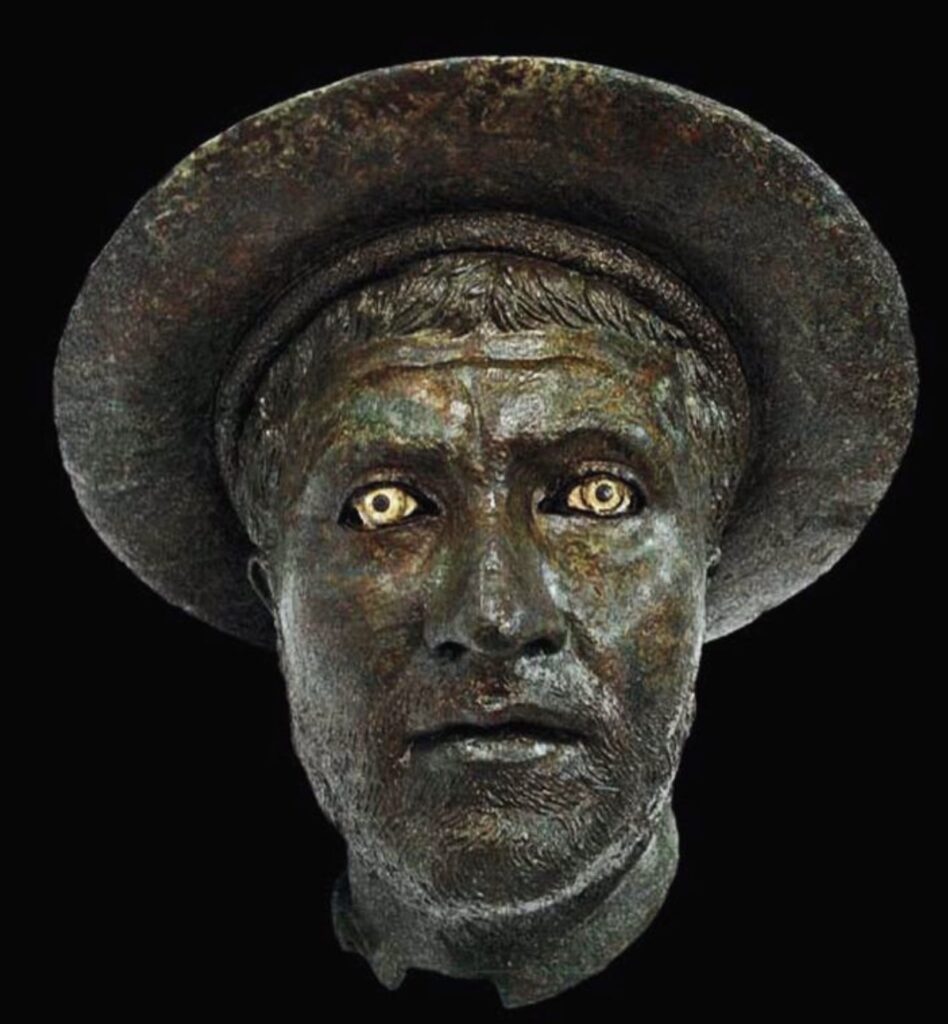With that designer scruff of a beard and magnificent hat, there’s a lot to love about this portrait, but there is much more at play here than a manly fashion statement…
Because that’s no ordinary hat: it is a kausia (the special northern cousin of the petasos, the Greek traveler’s hat) nestled on his head like a friendly mushroom cap, elevated in the course of the 4th century B.C. and to extreme new heights by Alexander the Great in the course of his Eastern campaigns.

The kausia was made of leather with a woolen sweatband, and by the waning decades of the 4th century was the hat of Macedonian military elite (possibly with a special connection to cavalry), combined by Alexander with the diadem to form a royal ensemble that he bestowed upon his close companions. Here no diadem is present, but the head’s scale (a bit over lifesize) would indicate someone of importance and royalty shouldn’t be ruled out. It has been speculated (cautiously but convincingly by Olga Palagia) that this man could indeed be a Macedonian royal of the 3rd century B.C. perhaps Philip V, but I imagine we will never known definitively.
The head (hat still attached) was found by chance by locals in the sea off of Kalymnos, where the current and rocky reefs in the Dodecanese made for an especially treacherous maritime passage and numerous downed ships. This particular ship was likely Roman, wrecked in the Republican period when victorious Roman generals had a penchant for denuding Greek sanctuaries and bringing the statuary back to Italy…particularly when that statuary depicted their vanquished opponents.
This man was very possibly part of the same cargo that yielded two headless horsemen and a colossal draped Ptolemaic woman (all in bronze) in the area, perhaps once standing in a nearby sanctuary at Kos. These chance finds from the capricious Mediterranean are both frustrating (for lack of context) and wonderfully romantic – who doesn’t like to imagine a sponge diver coming face to face with such ‘ancestors’ in the depths?




